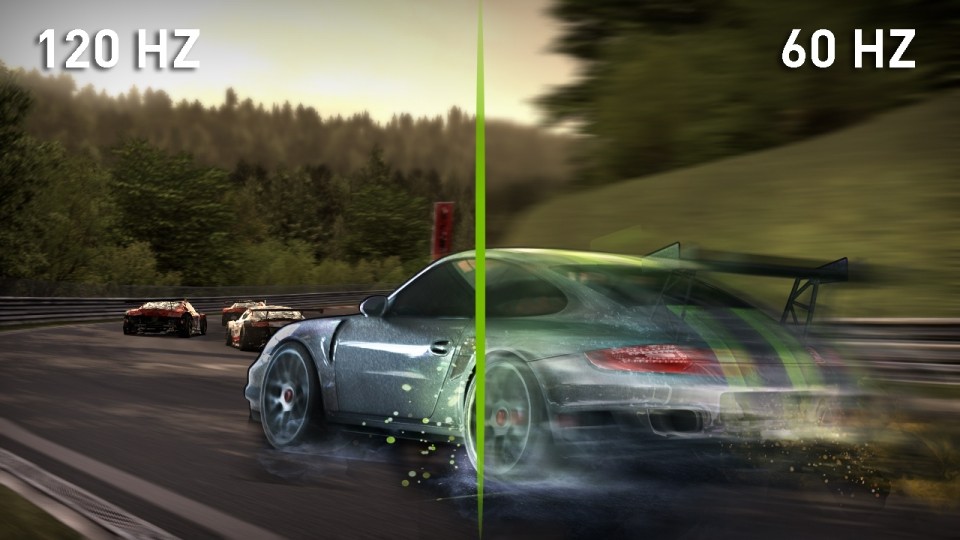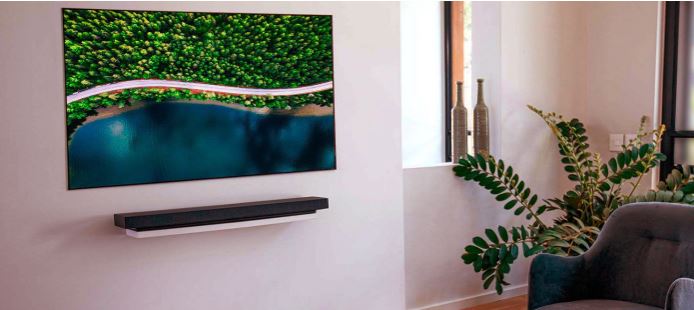Television has become an essential part of our lives. It is one of the first things most of us will switch on as soon as we reach the sofa. But have you ever researched the technology before buying a TV? There’s one thing that will continuously pop up: Motion Rate 120.So, what's motion rate tv meaning? Let's figure this out.
You might be thinking that “Motion Rate 120” means that the TV has a massive 120Hz refresh rate. But in reality, it is the same 60Hz refresh rate TV that can generate a 120 frame-per-second (FPS) effect.
Samsung, Sony MotionFlow, and LG TruMotion 120 all use the same marketing technique to get consumers interested in their TV. Using high-sounding words like “Motion Rate 120” or “TruMotion 120 Hz”, they make it sound like you are buying a cinema-quality TV. But what is behind these fancy names?
The manufacturers say that the Motion Rate 120 (Samsung), Sony MotionFlow and TruMotion 120 (LG) is a number displaying how many times per second a TV can update its image by inserting black images between every image displayed on the screen.
But here is the problem with Motion Rate 120, TruMotion 120, and Sony MotionFlow - they are not an actual measure of refresh motion rate 120 or image flicker/strobing since TVs do not update their screens 60 times per second. The only thing that actually updates 60 times per second on a TV is the backlight and it can be turned off when watching movies. What TVs truly update every single millisecond (1/1000 of a second) is called "pixel persistence" or "persistence".
It's all marketing — but there's no harm in using it as long as consumers know what they're getting into. The “120” stands for 5 sub-images per frame. To achieve Motion Rate 120, the TV displays images of different shades at 120 sub-frames per second to trick your brain into thinking movement is smooth. However, the TV is still displaying old images which result in blurring.

Samsung Motion Rate & Motion Rate 120
For years, Samsung Motion Rate has been considered a leading TV manufacturing brand. The display and build quality exhibited by Samsung Motion Rate devices are genuinely exceptional. And interestingly, Samsung claims to have a motion rate 120 integrated with all of its TV models.
But does that mean that Samsung Motion Rate TVs can generate a true 120 Hz refresh motion rate effect? Sadly, that’s not the case. The Samsung motion rate 120 is included in the brand’s tagline because Samsung TVs can replicate the motion rate 120 FPS screen effect. And there’s quite a difference between FPS and refresh motion rate.
When you play a movie or shoot a video with your phone, the number of frames per second (FPS) is the speed at which individual still images shown consecutively create the illusion of movement. So while some TVs will have faster response time and smoother transitions between different shades, it doesn’t necessarily mean that they refresh faster.
Samsung Motion Rate 120 is a misleading marketing gimmick, but that doesn’t mean the TV isn’t good in general. You can still use it to watch movies or play games in order to get that cinema-like experience.
However, keep in mind that Samsung TVs are not true 120Hz TVs - they are only able to display images with different shades at 120 sub-frames per second. This makes them better capable of inserting black images between every image displayed on screen so the backlight doesn't have to be turned off when watching movies. And since there's no real difference between this and standard 60Hz display technology, most buyers shouldn't be too concerned with it.

Sony MotionFlow: Does it have a motion rate 120?
Considering the high-end Sony Bravia Series, Sony MotionFlow indeed has an integrated motion rate 120 stimulating system. But the 120 FPS stimulation is achieved by accelerating a 60Hz panel.
In other words, the panel used in the TV will be the one with a maximum of 60Hz refresh motion rate. But as soon as the Sony MotionFlow is activated, the motion rate 120 effects will become visible, giving the viewer a more transparent and easier to grasp image even with the lowest nits settings.
It is important to understand that motion rate 120 is achieved with the help of frame interpolation. This means that when you activate Sony MotionFlow, you are actually inputting additional frames in between original images displayed on screen.
Sony MotionFlow is a technology that allows your TV to simulate 120Hz refresh rate, which results in smoother motion and higher clarity. The double the refresh motion rate essentially doubles the image output of your TV. This means you can watch movies or play games more smoothly on Sony MotionFlow enabled TVs. But don’t confuse Sony Motion Flow with actual 120Hz TVs - they are not real 120 Hz TVs.
If you want to play your games or watch movies in 120fps, you must purchase a TV with true 120 Hz refresh motion rate 120.

LG TruMotion: Has it achieved a motion rate 120 Hz?
LG TruMotion 120 has been apparent in explaining exactly what their TruMotion 120 stands for. The company never claimed to achieve a 120 Hz refresh rate with the TruMotion enabled. The TruMotion 120 feature is only associated with accelerating the FPS rate.
As a result of a higher FPS rate, the picture quality does improve dramatically. But with a 60 Hz panel, the accelerated FPS rate may not be adaptable with the majority of the users. That’s why it is a better idea to keep the TV in its default FPS settings.
Basically, LG TruMotion 120 features a higher frame rate within an LCD producing a smoother picture even with the lowest nits setting. The result is similar to Sony MotionFlow - TruMotion 120 tries to make movies and video games look as realistic as possible.
Note that there’s no need for you to play games or watch videos in 120fps with LG TruMotion 120 enabled. It will only result in more blur images and feel unnatural since most people can’t distinguish between 100fps and 120 fps unless they have a trained eye. And if you want to play your games or watch movies at 120fps, you must purchase a TV with true 120 Hz refresh rate as above mentioned.

To summarize:
- Samsung Motion Rate has been using a misleading marketing gimmick about Motion Rate 120 whereas Sony MotionFlow and LG TruMotion 120 have been honest with their TruMotion 120 technology.
- Sony MotionFlow is able to display black images between every image displayed on the screen thanks to the high frame motion rate, but Samsung has not achieved real 120Hz refresh motion rate yet.
- All of those technologies are only capable of displaying images with different shades at 120 sub-frames per second (i.e., double the normal frame motion rate), and thus can make your movies and games look more realistic than usual without having a negative impact on motion blur
- There’s no need for you to play games or watch videos in 120fps with Samsung; it will only result in more blur images and unnatural since most people can’t distinguish between 100fps and 120 fps unless they have a trained eye.
And as mentioned above, if you want to play your games or watch movies at 120fps, you must purchase a TV with true 120 Hz refresh motion rate as above mentioned.
Is ‘Motion Rate 120 (FPS)’ effective?
It depends, depends upon the personal preferences and requirements of the user. If you are looking for a TV to use for your gaming console that supports a 120 Hz refresh rate, you will go with a 120 Hz refresh motion rate option.
But if you are considering using the TV as a regular TV in your house or office, then a 60 Hz TV with a motion rate 120 (FPS) is going to be a great option. Make sure to go through the TV guide thoroughly before activating the motion rate 120 (FPS) effect.
Conclusion
TV technology has progressed exceptionally over the last decade, especially if we talk about the features and display options we are enjoying in the recent television models. And with the whole craze for a 120 Hz refresh motion rate or higher display, most of us have become display experts ourselves.
As for Samsung Motion Rate 120, we can clearly say that they are not real 120 Hz TVs.
There’s still a lot of confusion regarding the TruMotion 120 technology and many people think it is similar to Sony MotionFlow. But LIke stated above, there’s no need for you to play games or watch videos in 120fps with LG TruMotion 120; it will only result in more blur images and feel unnatural since most people can’t distinguish between 100fps and 120 fps unless they have a trained eye. And if you want to play your games or watch movies at 120fps, you must purchase a TV with true 120 Hz refresh motion rate as above mentioned.
The important thing to keep in mind is that ‘motion rate 120’ doesn’t mean a display with a 120 Hz refresh motion rate. It is simply a marketing strategy for a TV with a 60 Hz refresh rate panel stimulating a 120 FPS effect under specific settings and for certain models.